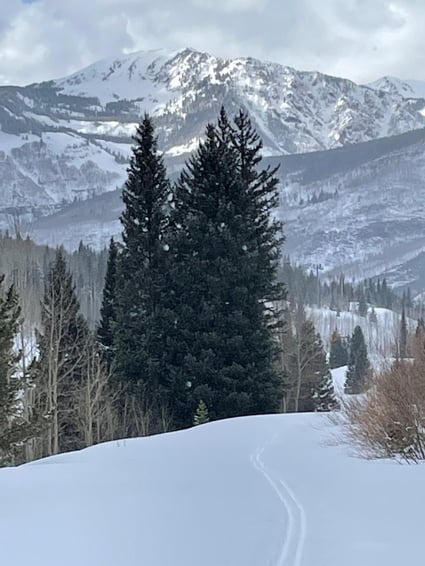Temperate weather this fall extended one of the finest aspen-viewing seasons in memory. In fact the National Oceanic and Atmospheric Administration reports that September was the warmest on record for North America, marking the 46th-consecutive September (and the 453rd-consecutive month) with temperatures above the 20th_ century average.
Now that snow is accumulating, our focus (some might say obsession) turns to winter sports. Locals and scientists alike tell us that our high-country winters are getting warmer and shorter. While some enjoy the longer hiking and biking weather, it is in the best interest of our local economies and ecosystems to protect our winters. Let’s dig into the science behind warmer and shorter winters, and what they mean for us and for our wildlife neighbors.

With climate change, temperatures in the western U.S. are rising, leading to a shift in seasons. Using data from the US Global Change Research Program, the U.S. EPA reports that winters are particularly vulnerable to rising temperatures – minimum temperatures have increased at a rate even higher than average maximum temperatures. This means that some of what used to fall as snow instead falls as rain, while snowpack in many areas forms later, is shallower, has higher water content, and melts sooner.
The EPA reports that April snowpack in the Rockies and Cascades shrank an average of 23% from 1955-2022. The date of maximum snowpack in Colorado has become increasingly earlier, and snowpack duration has decreased by an average of 18 days. The lead author of a 2022 study predicts that Colorado will experience a 50-60% reduction in snow by 2080
 Bald Mountain is forecasted to be even balder for longer times of the year due to the warming climate.
Bald Mountain is forecasted to be even balder for longer times of the year due to the warming climate.Bald Mountain photo: Credit Frances Hartogh
Ski resorts have invested millions in snowmaking, allowing mechanized-supported snowsports to start sooner and continue into spring. In the 2021-22 season alone, U.S. ski areas invested almost $98 million in snowmaking improvements to existing systems. Snowmaking represented 10%-20% of resorts’ annual power bills.
Earlier snowmelt affects the timing and availability of water for human consumption. The USGS calls snowpack “water in the bank.” Almost 80% of fresh water in the western U.S. comes from snow. Over 70 million westerners depend on the gradual melting of mountain snowpack for drinking water, irrigation, and hydropower. Warming temperatures and earlier snowmelt also cause earlier and more severe wildfire activity. Smoke particles, along with dust blown in from drought-stricken areas, darken snowpack, accelerating the rate of melting.
How are shifting winters affecting wildlife and plants? The Rocky Mountain Biological Laboratory near Crested Butte reports that warming temperatures encourage hibernators to leave hibernation before food is available for them. Marmots, for instance, sensing warming temperatures, may leave hibernation only to find snow on the ground, which can lead to starvation. Pikas, which don’t hibernate, depend on the insulation of deep snowpack to maintain their body temperature. Decreasing snowpack also negatively affects lynx, whose snowshoe-like paws provide them a competitive advantage on snow when hunting their preferred prey, snowshoe hares. Hares, in turn, become more vulnerable to other predators, including coyotes and bobcats.
Earlier springs and fewer freezing days affect the timing of many life-cycle events, such as when pollinators emerge, when flowers bloom, and when migration occurs. This can have negative effects on ecosystems. Different species respond to different environmental cues, resulting in misalignment between species that rely on each other. While an earlier spring may lead to longer growing seasons, it can also result in more invasive species and pests, further disrupting ecosystems.
So, let’s keep doing our part to preserve our winters by lowering our carbon footprints. Helpful hints are available online. And sign up for Walking Mountains Science Center’s home energy assessment!

Frances Hartogh is a volunteer wilderness ranger and sawyer for ESWA, the Eagle Summit Wilderness Alliance. ESWA is an all-volunteer nonprofit that helps the U.S. Forest Service preserve and protect the four Wilderness Areas in Eagle and Summit counties.
 Bald Mountain is forecasted to be even balder for longer times of the year due to the warming climate.
Bald Mountain is forecasted to be even balder for longer times of the year due to the warming climate.








